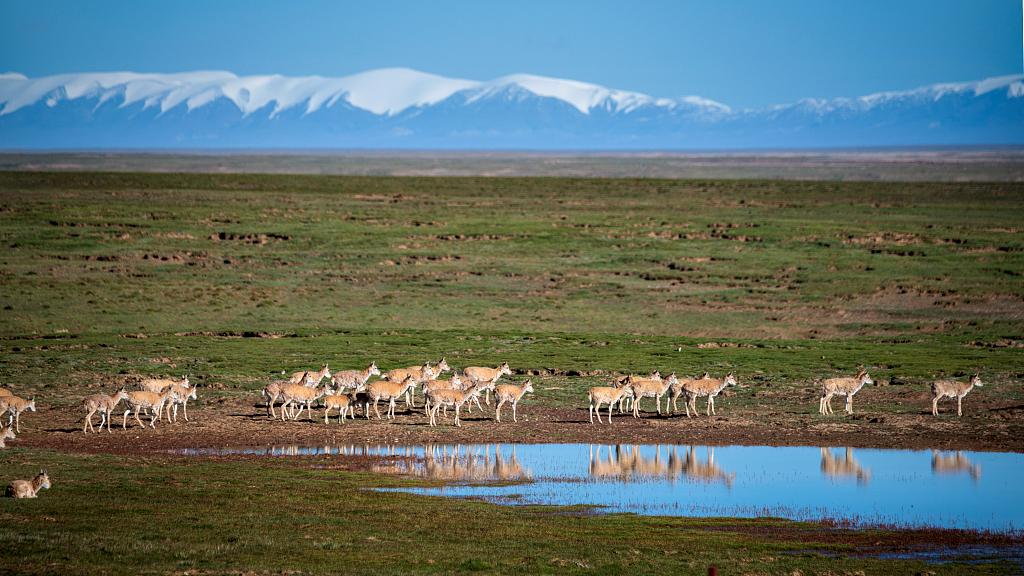Northwest China's Qinghai Province is becoming an increasingly welcoming habitat for wildlife thanks to multiple conservation measures in recent years.
Dubbed "the water tower of China," Qinghai is home to the Sanjiangyuan area where the rivers of Yangtze, Yellow, and Lancang originate. Featuring a high concentration of species, the province has been enhancing wildlife protection based on a series of establishments such as wildlife parks, botanical gardens, and wildlife rescue and breeding centers.
In the Qinghai-Tibet Plateau Wildlife Park, there are currently more than 1,200 wild animals of 108 species, including 97 wild animals of 16 species under first-class state protection and 210 wild animals of 30 species under second-class state protection.
At a wildlife rescue and breeding station in the Qilian Mountain National Park, staffers are busy feeding wild animals such as the desert cat. The station, which started operation in July, has received 34 isolated and injured wild animals, among which 26 were under either first-class or second-class state protection. Seven have since been successfully released, including one wild animal under first-class state protection, and four wild animals under second-class state protection.

In the recent decade, Qinghai has rescued more than 1,000 injured and trapped wild animals of 50 species and preserved 1,235 samples of forest germplasm resources.
As the largest inland lake in China, ecological improvement in Qinghai Lake has made it a major breeding ground with a large number and different species of migratory birds. The number of bird species in the lake has increased to 232.
The province has also been promoting the construction of a national park for biodiversity conservation.
China began the pilot operation of Sanjiangyuan National Park in 2016, and last October, the park received its official designation. Years of efforts in improving wildlife habitats and conservation of ecosystems increased the population of wild animals in the park.

Tibetan antelopes in Sanjiangyuan region in northwest China's Qinghai Province. /CFP
Tibetan antelopes in Sanjiangyuan region in northwest China's Qinghai Province. /CFP
The latest report released by Sanjiangyuan National Park showed that the population of Tibetan antelopes in Hol Xil in the hinterland of the Qinghai-Tibet Plateau has recovered from less than 20,000 in the 1990s to more than 70,000. The status of Tibetan antelopes in China has been downgraded from "endangered" to "near threatened."
Currently, the total area of nature reserves in Qinghai reached 267,500 square kilometers, accounting for 38.42 percent of the province's land area.
"We will continue to protect biodiversity in forests and grasslands and strive to make new breakthroughs," said Feng Yongsheng, deputy director of the national park and nature reserve management bureau of the provincial forestry and grassland administration.
(Cover image via CFP.)
(If you want to contribute and have specific expertise, please contact us at nature@cgtn.com)
Source(s): Xinhua News Agency